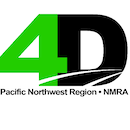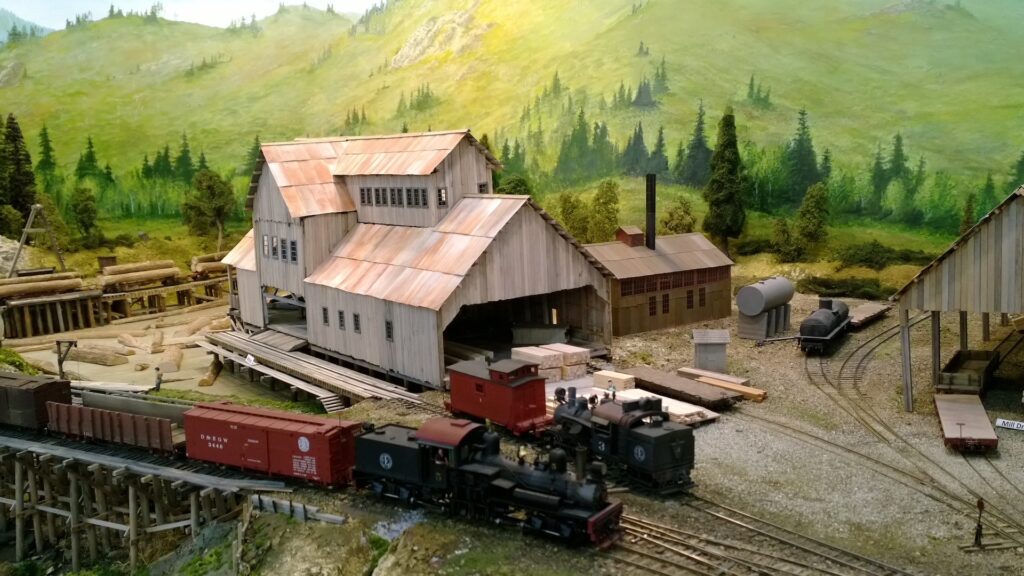By Ed Ives
Background
As a small boy at the end of WWII I was taken to see my great aunt who lived in the station masters house on a small country station. It was there that I was invited into the station signal box to see the levers and listen to the bell codes. The line was double tracked and at the end of each platform were the signals that governed the passage of the train. Every few miles down the line was another station with a signal box and signals. In those days the mechanical signals were all set at danger and pulled off for a passing train. Some years later the local signal boxes were replaced with power area boxes that controlled the passage of trains in a district. Later still came the color light signals and a change with block signaling where the normal aspect of a signal was green, changing to red when the block ahead is occupied, or amber if the block ahead is clear but the second block ahead is occupied. This was not fully realized by me at the time, as I would stand beside the green signal on a Sunday afternoon train watching for the train that rarely came.
Signaling on model train layouts
As a boy I always imagined a train layout with working signals and how to make that happen. It was obvious to me that running a couple of trains and manually operating the signals on any feasible layout would be highly unlikely verging on the impossible. The layout never came to be, but some years ago I joined the Hi-Rail modular group. Soon I started to think about signalling as my contribution to the layout. Color light signals seemed to be the obvious simplistic approach using a block signal logic. We already had operating accessories that were activated by a passing train but somehow we needed to simulate a section block. I quickly came to the conclusion that to make this happen would need yards and yards of wire, many connectors and a uniform approach to make this work in any layout arrangement. The idea was put aside, until recently.
I was rummaging through some Youtube videos and came across one labeled ‘Automated color light signals on a budget.’ The demonstration looked quite good, no computers and nothing to program, but did not mention the manufacturer of the equipment other than the items were available on Ebay. I followed up with a Google search and found a Chinese company ‘WeHonest’ that has an Ebay catalog featuring parts for multiple scale model railroads. Quite frankly I was not initially enthused about a company with such a name and less so when they advertised O gauge double aspect color light LED signals for the cost of a Starbucks coffee. With little to lose, I ordered a pair of signals. They arrived about ten days later and were made of gray painted brass and came with red and green LED lights already wired and all for $4 each. They looked very fine, so I went to the next level, or how to make them work. The company offers a manual switch to control the signals or a master board for automatic control. The master board is about the size of a pack of cigarettes and comes with an IR detector on a 12″ cord, all for $20. One also needs a power supply with various options such as off the train transformer. I chose the simplest option and that was to buy a small transformer that plugs directly into the master board for $13. I’m sure that one could buy these elsewhere for $5 but they do come with a convenient coaxial plug fit for purpose. The search for the alternate would not be worth my effort. So now I have all the components of a working signal for less than $40.
Time for a test track and a learning experience. The wires from the signal are very fine and are difficult to secure in the terminal strip on the master board. The IR detector was located in the track and is equipped with a plug to attach to the master board. Pretty darned simple and a test was made resulting in total failure. Oops, one of the signal wires came loose from the terminal strip and this became a recurring problem. OK a simple solution was to make the wire thicker as it attaches to the terminal strip. An improvement was achieved but still a failure in that the green light changed to a permanent red after about one second of turning on the power. I chewed on this for a while until a magic thought came to mind, how about reading the instructions?, 13 pages of them, although not having done this before. In fact in this case only two pages are of significance, 1) a large scale diagram of the master board and 2) the set up for the specific task, i.e., dual aspect signals. Here it is revealed that the master board is the heart of quite a few interesting controls involving train detection. What came to light was that the master board has a bank of eight very small switches that need to be selected in a specific sequence of on and off. I needed a magnifying glass to see this clearly, or that is my excuse. Once set per the directions everything worked fine. The next test was about durability and how long they will work.
Two modules were equipped with the signals and were ready for the Lynden show. The signals worked fine until the sun shone on the IR detectors and functioning stopped for the rest of the day. It was 88 degrees outside and bright sunshine. The next day all worked well until the sun came in through the windows in the roof of the building.
For Maple Valley there were no windows in the building roof and the signals worked without a hitch the whole weekend.
The signals work as follows:
- The normal setting is green.
- A train passing the signal and the IR detector turns off the green light and turns on the red light.
- The IR detector recognizes the end of the train and triggers a timer that when run down turns the red light off and the green light on. At the moment the timer is set for 10 seconds which is OK for most purposes.
Master board
The master board can control two, three, or four aspect signals and is the primary control for highway traffic lights, grade crossing signals and more. If so, it’s an ingenious piece of kit. I hope to check that out in the not too distant future.
Ed

